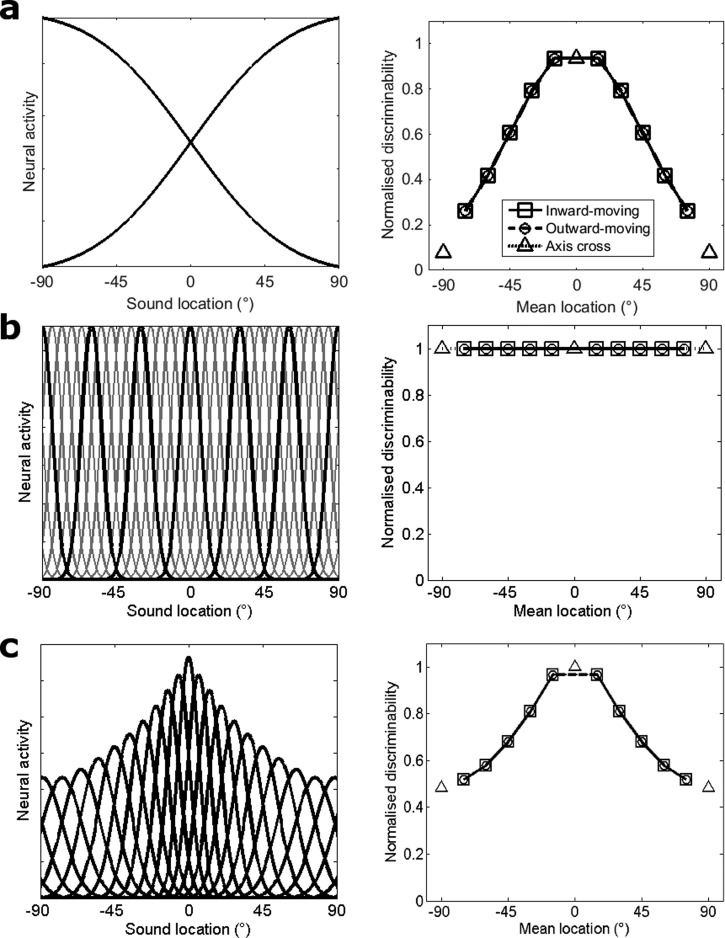In the original paper performance predicted by the modified topographic model was, due to an author error, erroneously considered relative to reference sound location rather than to the mean location of reference and target sounds. When this correction is applied (amended Fig. 3C) there is no longer a difference in performance for outward and inward moving sounds. Therefore, listeners' performance in the low-pass condition is consistent either with the two-channel model or the modified topographic model, rather than with the two-channel model alone as stated in the paper. Behavioural performance in the broadband and high-pass conditions remains inconsistent with any of the models.
FIG. 3.
Models of sound location coding: The left-hand column shows representations of the models in terms of neural activity that would be expected for a given sound source location. The two-channel model (a) is represented by two Gaussians with means of −90° and 90° and standard deviation of 46°. The topographic model (b) is represented by multiple Gaussian curves located 6° apart with a standard deviation of 6. The modified topographic model (c) is represented by multiple Gaussian curves, with the midline represented by more and more narrowly tuned channels, the narrowest being 6° and the broadest, 12°. In (b) the channels are shown in grey with every tenth channel in black for visualisation purposes. The right-hand column shows the normalised discriminability (where 0 is chance and 1 is maximum performance) of the direction of the stimulus at the mean stimulus location based on the models. The two-channel model (a) discriminability is calculated as the change in the ratio of activity of each channel between the reference and target stimuli. In the topographic (b) and modified topographic (c) discriminability is estimated by calculating the difference in Euclidean distance between the peak population activity generated by the reference and target sounds.



